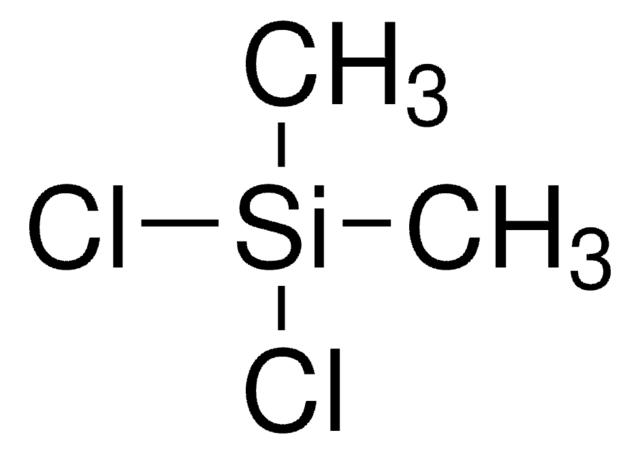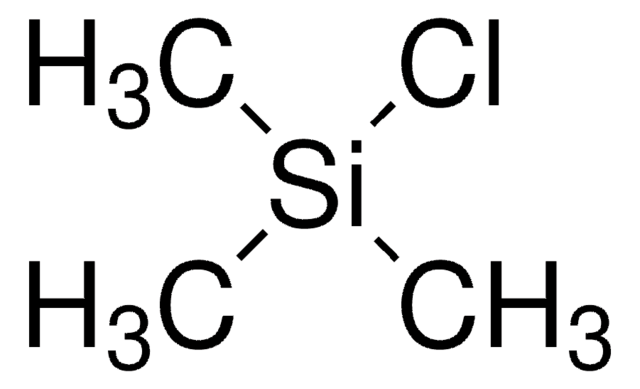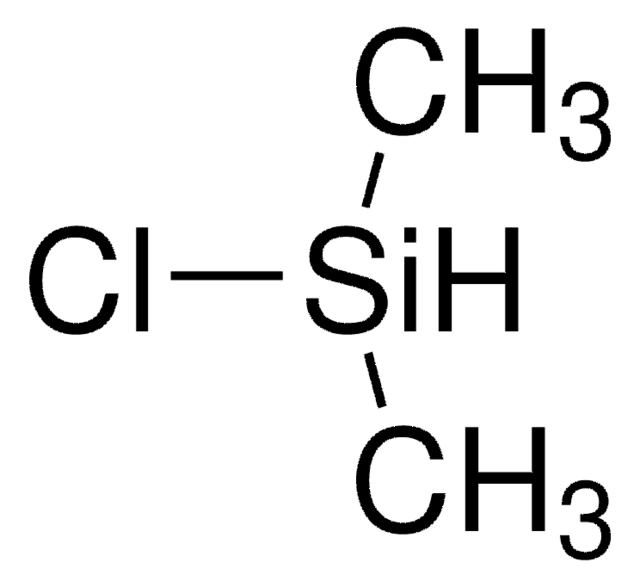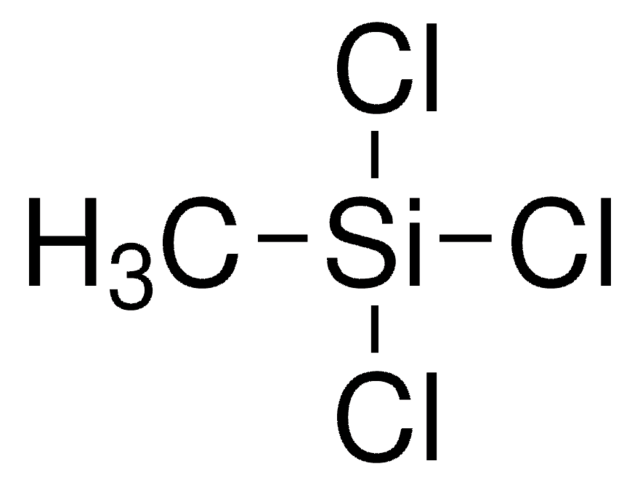8.03452
Dichlorodimethylsilane
for synthesis
Sinónimos:
Dichlorodimethylsilane, Dimethyldichlorosilane
About This Item
Productos recomendados
presión de vapor
<200 hPa ( 20 °C)
Nivel de calidad
Formulario
liquid
temp. de autoignición
425 °C
potencia
6056 mg/kg LD50, oral (Rat)
lim. expl.
1.75-48.5 % (v/v)
bp
70 °C/1013 hPa
mp
-76 °C
temperatura de transición
flash point -5 °C
densidad
1.07 g/cm3 at 25 °C
temp. de almacenamiento
2-30°C
InChI
1S/C2H6Cl2Si/c1-5(2,3)4/h1-2H3
Clave InChI
LIKFHECYJZWXFJ-UHFFFAOYSA-N
Aplicación
- Modification of silica nanoparticles by dichlorodimethylsilane for foam stability and decontamination efficiency: This study explored the surface modification of silica nanoparticles using dichlorodimethylsilane to enhance foam stability and decontamination efficiency (IH Yoon et al., 2016 - kns.org). View Article.
- Formation of a macrocycle from dichlorodimethylsilane and a pyridoxalimine Schiff base ligand: Researchers reported the synthesis of a novel macrocyclic silicon compound through the reaction of dichlorodimethylsilane with a Schiff base ligand (U Böhme et al., 2021 - scripts.iucr.org). View Article.
- Use of Dichlorodimethylsilane to Produce Polydimethylsiloxane as a Substitute for Vitreous Humour: Characteristics and In Vitro Toxicity: This research evaluated polydimethylsiloxane produced from dichlorodimethylsilane as a substitute for vitreous humour in vitreoretinal surgery (DG Auliya et al., 2023 - mdpi.com). View Article.
- Dichlorodimethylsilane mediated one-step synthesis of hydrophilic and hydrophobic silica nanoparticles: The study focused on the use of dichlorodimethylsilane for the one-step synthesis of silica nanoparticles, examining the effects of various synthesis parameters (F Ebrahimi et al., 2017 - Elsevier). View Article.
- Hydrophobization of cotton fabric with silanes with different substituents: This paper explored the hydrophobization of cotton fabric using various silanes, including dichlorodimethylsilane, to enhance fabric properties (T Makowski, 2020 - Springer). View Article.
Palabra de señalización
Danger
Frases de peligro
Clasificaciones de peligro
Acute Tox. 3 Inhalation - Acute Tox. 4 Oral - Eye Dam. 1 - Flam. Liq. 2 - Skin Corr. 1A - STOT SE 3
Órganos de actuación
Respiratory system
Código de clase de almacenamiento
3 - Flammable liquids
Clase de riesgo para el agua (WGK)
WGK 1
Punto de inflamabilidad (°F)
33.8 °F - closed cup
Punto de inflamabilidad (°C)
1 °C - closed cup
Certificados de análisis (COA)
Busque Certificados de análisis (COA) introduciendo el número de lote del producto. Los números de lote se encuentran en la etiqueta del producto después de las palabras «Lot» o «Batch»
¿Ya tiene este producto?
Encuentre la documentación para los productos que ha comprado recientemente en la Biblioteca de documentos.
Nuestro equipo de científicos tiene experiencia en todas las áreas de investigación: Ciencias de la vida, Ciencia de los materiales, Síntesis química, Cromatografía, Analítica y muchas otras.
Póngase en contacto con el Servicio técnico








